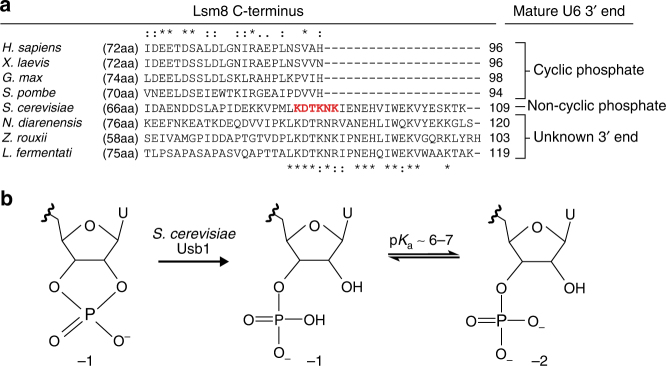Fig. 6.
Covariation of U6 3′ end structure and the C-terminus of Lsm8. a Sequence conservation among the top four sequences is shown above the alignment, while conservation for the remaining sequences is below the alignment. The residues depicted in red were mutated to alanine in Fig. 5, Supplementary Fig. 4, and Supplementary Table 3. Organisms in which U6 has a 2′,3′-cyclic phosphate terminus lack a C-terminal extension of Lsm832,33,37,77. In contrast, numerous Saccharomycetaceae orthologs of Lsm8 resemble S. cerevisiae, which harbors a non-cyclic phosphate on U631,37. b Cyclic phosphorylated U6 has a charge of −1 while non-cyclic phosphorylated U6 can have a charge of −1 or −2, due to the latter’s second ionization constant that is close to physiological pH78. The longer C-terminal region of S. cerevisiae Lsm8, with conserved lysine or arginine residues, likely compensates for the greater negative charge on the 3′ end of S. cerevisiae U6 snRNA

